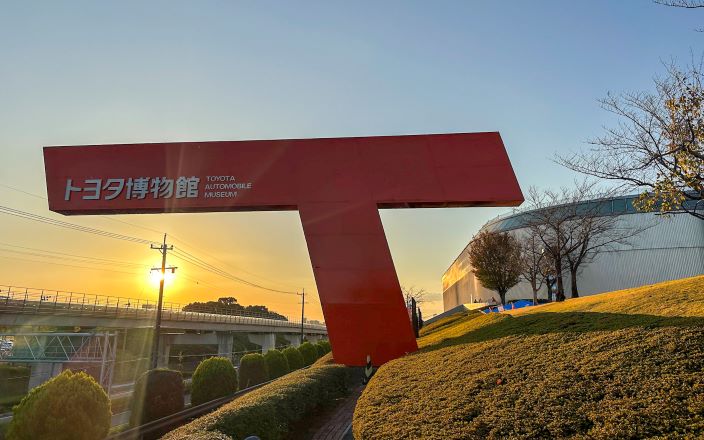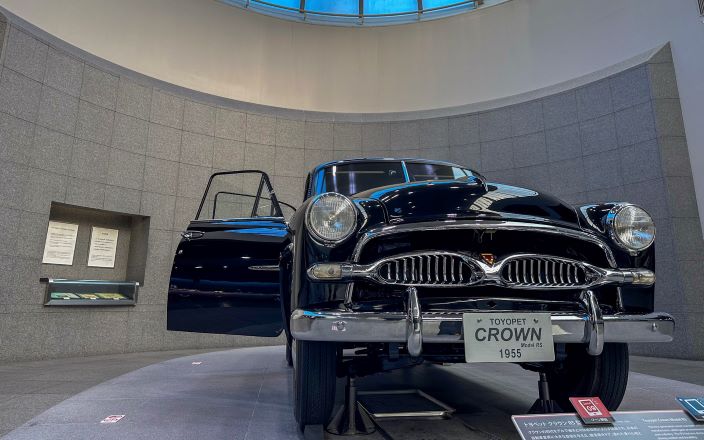Toyota, Japan’s world-class automaker, is an indispensable player in the global automotive industry, with record annual production in 2023 and a global automotive market share of more than 10% in 2023.
The Toyota Automobile Museum in Nagakute City, Aichi Prefecture, was established in April 1989 as one of the commemorative projects for Toyota Motor Corporation’s 50th anniversary. Although the museum is called the “Toyota” Museum, it is not only a facility to learn about the history of Toyota Motor Corporation, but also a museum that traces the evolution and culture of cars around the world.
Access
It takes 30 minutes from Nagoya Station by expressway. Free parking for 320 passenger vehicles is available. The facility is also easy to reach by public transportation, a 5-minute walk from Geidai-dori Station (in front of the Toyota Museum) on the Linimo (Tobu Kyuryo Line). Incidentally, it is also close to Ghibli Park, only two stops away by Linimo!
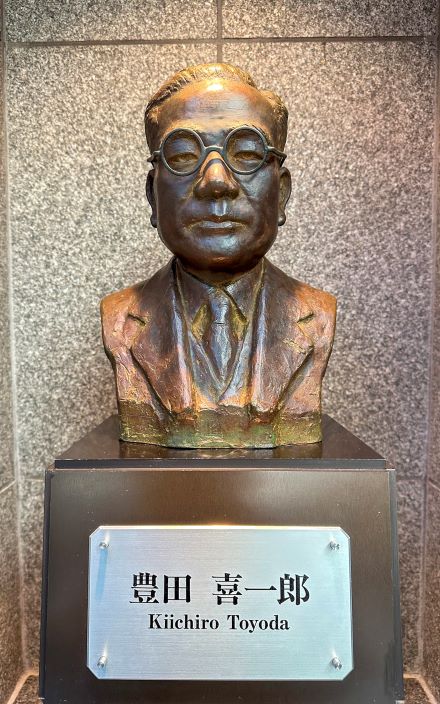
The Toyota Automobile Museum consists of two buildings, the Automobile Gallery and the Cultural Gallery. In this post, we are introducing the Cultural Gallery.
[related id=6540 label=” Please read this post about the Automobile Gallery”]
Cultural Gallery
The Automobile Culture Showroom on the second floor of the Cultural Gallery displays approximately 4,000 items from the Toyota Automobile Museum’s collection of more than 200,000 domestic and international automobile-related cultural materials under the theme of “Mobility and culture
~Mobility fosters culture, and culture encourages mobility~”. Visitors can enter the museum through the entrance near the large bus parking lot, which is also connected to the Automobile Museum by a connecting passageway.
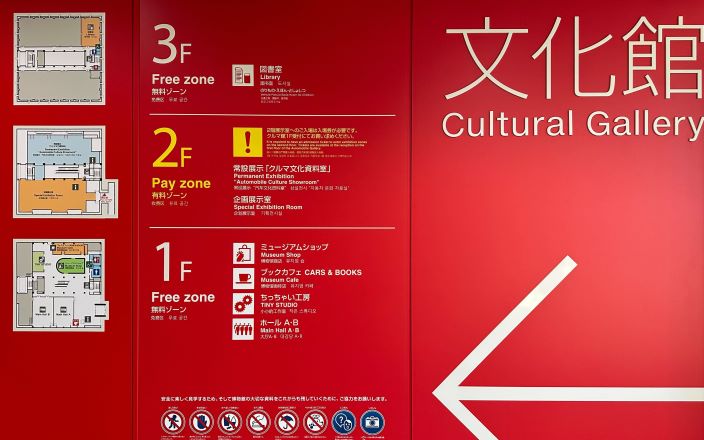
Let’s take a look at some of the items on display.
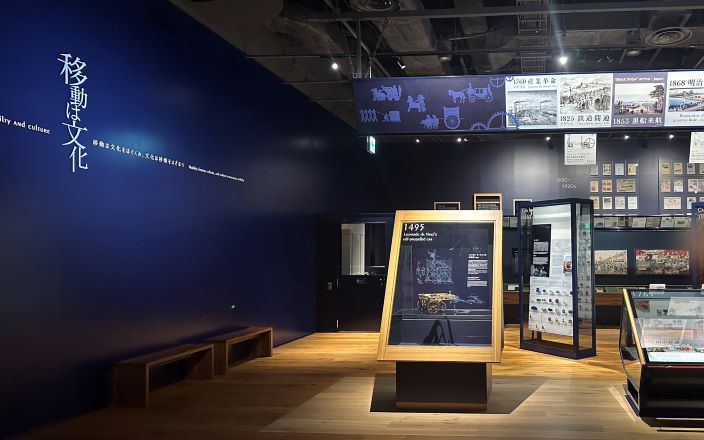
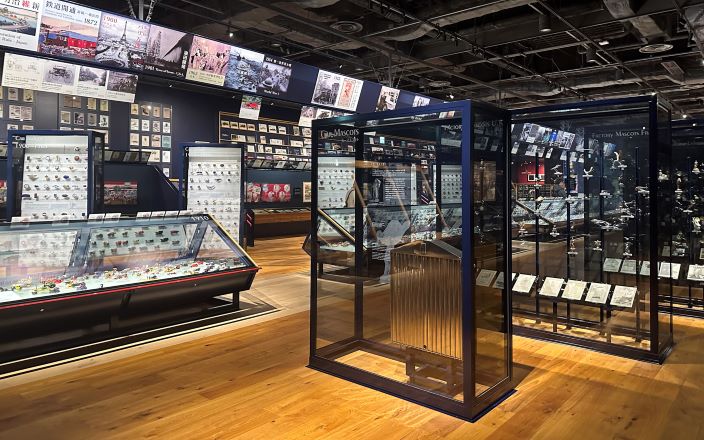
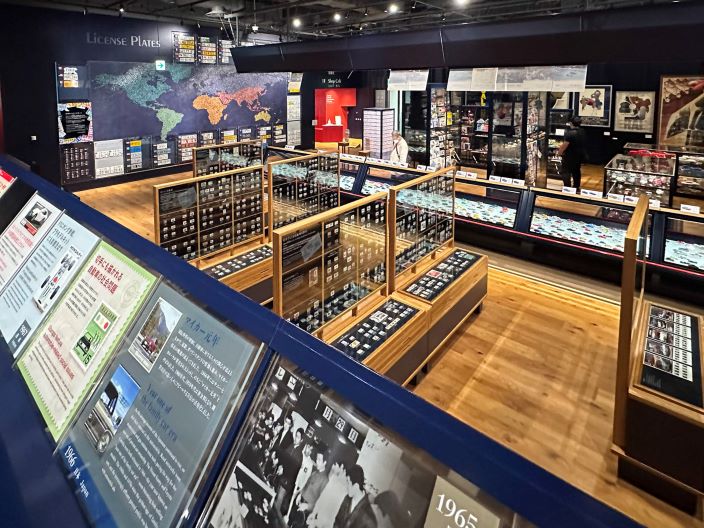
Leonardo da Vinci’s Self-propelled car
The first automobile was the ” Self-propelled car ” invented by Leonardo da Vinci in 1945. It was a groundbreaking invention that made it possible to run without human power using a spring mechanism.

Vehicle culture as seen in early printed matter in Japan
As Japan abandoned its isolationist policy in the mid-19th century to pursue modernization under the Meiji government, new vehicles—such as horse-drawn carriages, rickshaws, and railcars—were introduced. The changes in the means of transportation at that time are introduced through colorful nishiki-e prints.
Although the automobile was not yet a popular vehicle, it was the object of children’s admiration at the time, as evidenced by the appearance in the furoku (free gift) of magazines of fans and backgammon games depicting automobiles.

Automobiles and publications / Automobile posters
The exhibition introduces the evolution of the automobile through covers of automobile magazines published worldwide from 1894 to around 2000, as well as automobile catalogs by decade.
Also on display are about 20 posters selected for each theme from the museum’s collection of about 300 posters. Some of the posters are more than 100 years old. To protect the posters, they are carefully maintained at a temperature of 22 degrees Celsius or lower and a humidity of 50% or lower, and are displayed with as little lighting as possible.
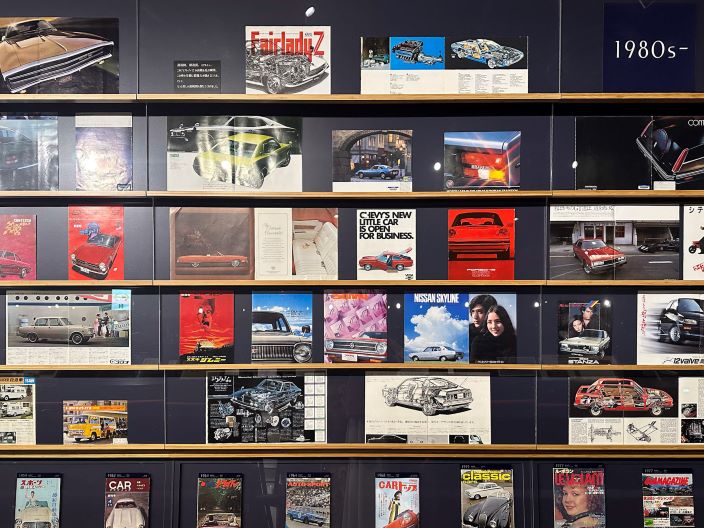
Model Cars (1/43 scale)
About 800 miniature cars are displayed in showcases in the central part of the exhibition room, where visitors can see how automobile design has changed since the days of the steam car in 1769, including colors and shapes.
The overhead also features a chronological notation of representative events in world history, making it easy to understand that this car was born in this era.

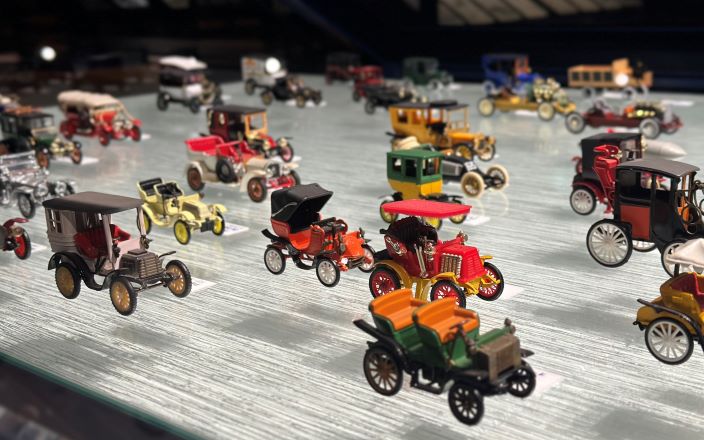
Car mascots and Car badges
Car mascots were initially used as good luck charms, but later came to be used to identify one’s car. The Toyota Museum displays about 130 metal car mascots by country, as well as glass car mascots created by French glassworker René Lalique. There are 29 types of glass mascots in total, and this is probably the only place in the world where all of them are available.
Car badges are the very image of a car manufacturer’s brand. Here, approximately 400 car badges that are filled with passion are exhibited according to age.
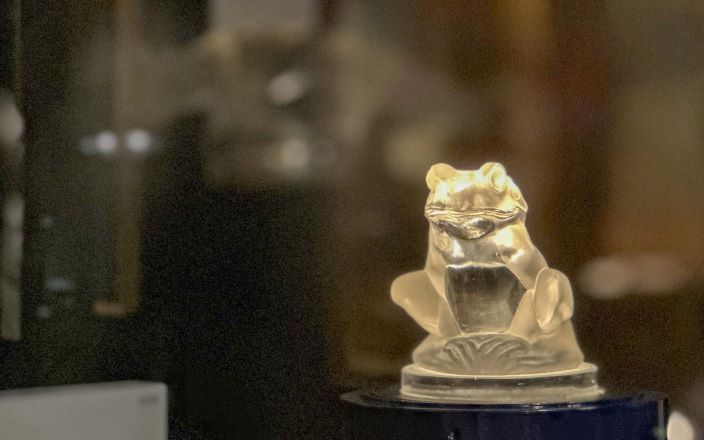
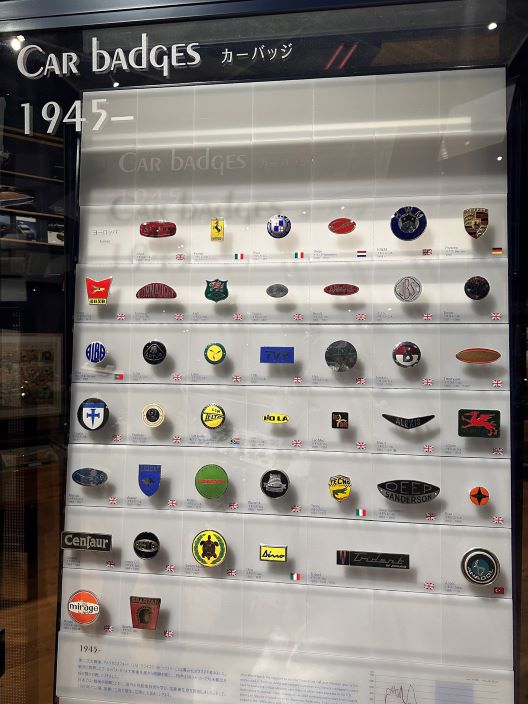
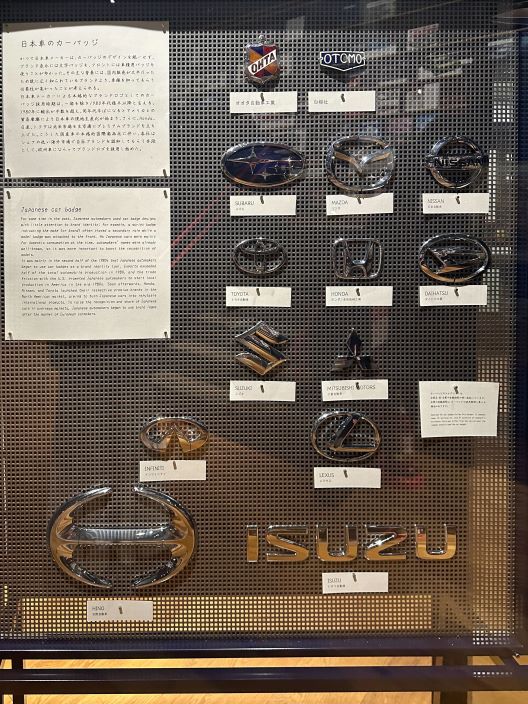
Toy cars and games featuring automobiles
Toys and games related to automobiles are also introduced. After the World War II, Japan was not yet allowed to manufacture passenger cars, so tinplate toys were exported to earn foreign currency. The elaborately made tinplate toys made people talk about the excellence of Japanese technology.
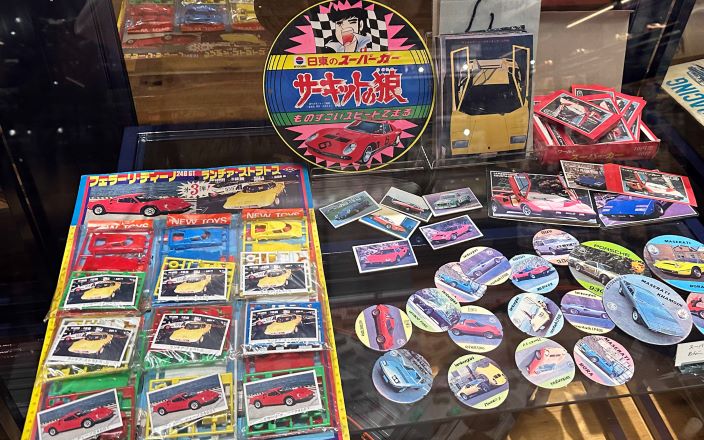
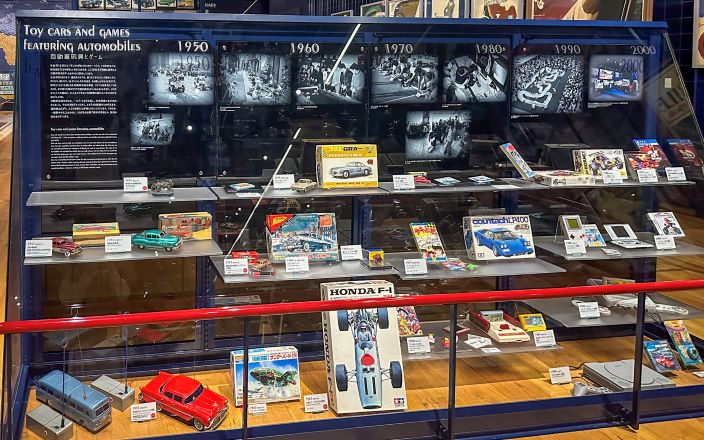
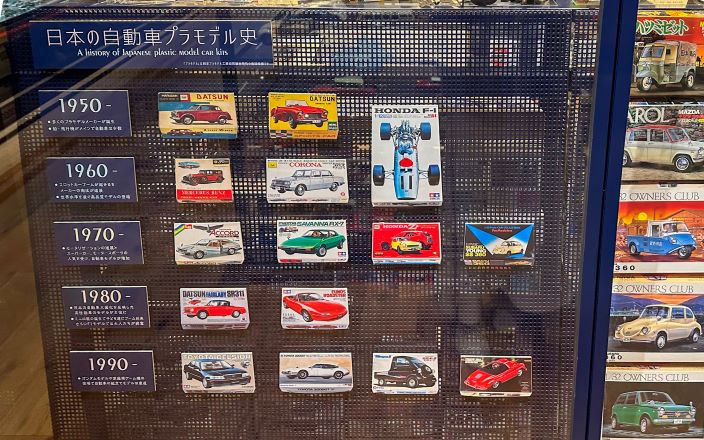

License plates
License plates from around the world are displayed along with a world map made of ceramics. Visitors can enjoy the differences in design between countries.
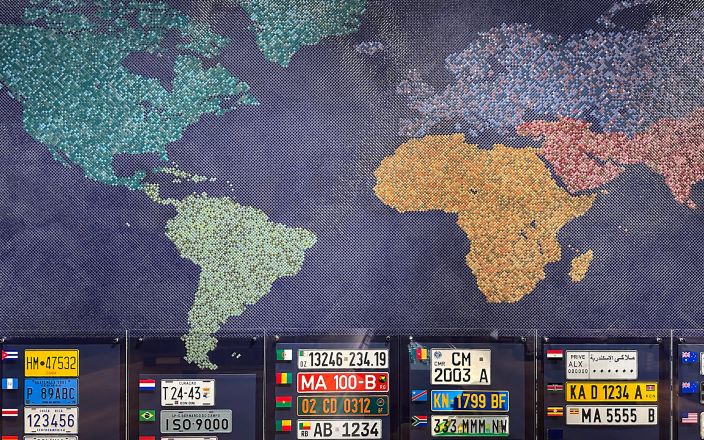
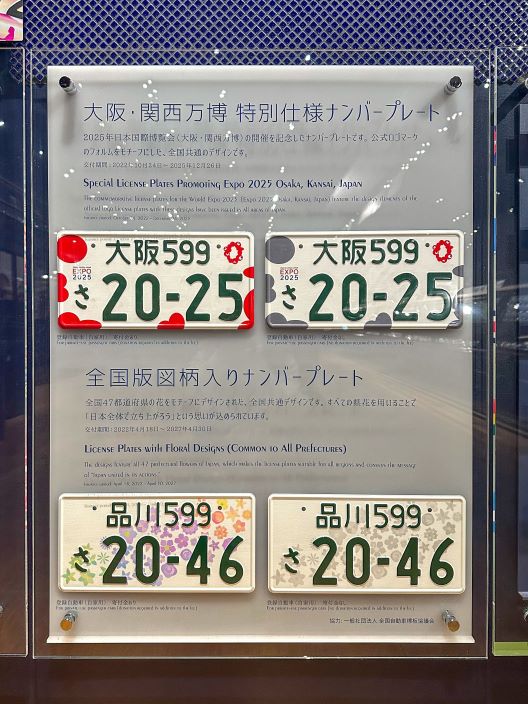
Literature, manga, cinema, music
In the red-painted “Red Room,” visitors can actually hold movies, manga, and novels featuring cars in their hands. Basically, only one volume is on display, but if you are interested in the rest of the story, you can read the rest in the library on the upper floor.


Although the exhibition room itself is not that large, the “Cultural Gallery” has a large number of works and is very impressive. I realized that “Mobility fosters culture, and culture encourages mobility” through various items.
The Toyota Automobile Museum is a must-see facility for car enthusiasts, and even those who are not familiar with cars can enjoy learning about the culture and history of automobiles. If you are sightseeing in Nagoya, why don’t you take a short trip to visit?

Toyota Automobile Museum
| Address | 41-100 Yokomichi, Nagakute City, Aichi Prefecture 480-1118, Japan |
| TEL | (+81) 561-63-5151 |
| Open Hours | 9:30-17:00 (Last admission is at 16:30.) |
| Close | Monday (or Tuesday when Monday falls on a public holiday), the Year-end and New Year holidays |
| Admission Fee | 【Adults (ages 18+)】¥1,200 【Seniors (ages 65+)】¥700 【Junior high and high school students】¥600 【Elementary school students】¥400 *** Admission is free for preschool children. |
| Website | https://toyota-automobile-museum.jp/en/ |

